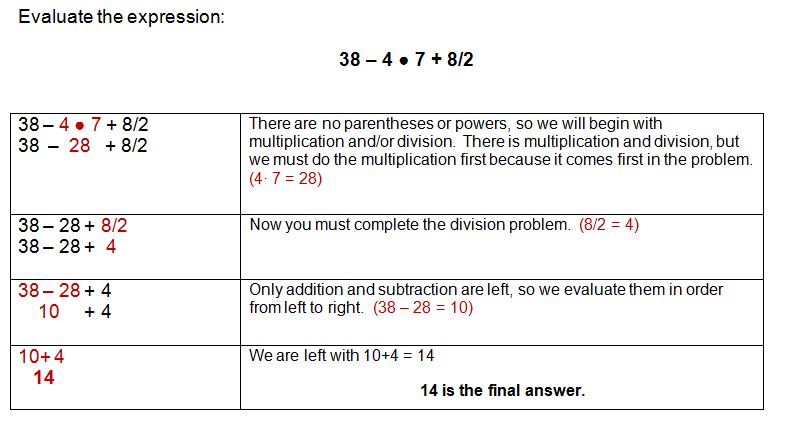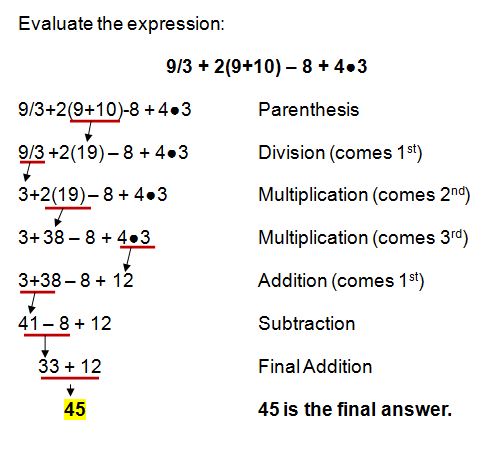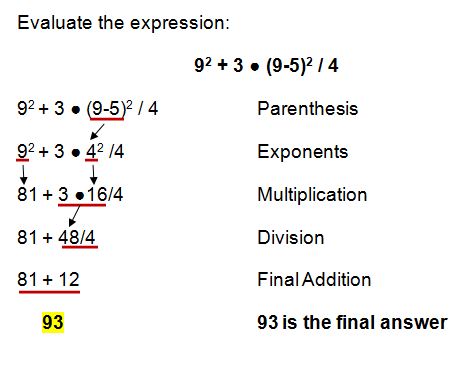Using the Order of Operations - Also Known as PEMDAS
How many times have you evaluated a numerical expression, and even though you know your addition, subtraction, multiplication, and division is correct, you still have the wrong answer?
If this has happened to you, then you probably haven't used the Order of Operations correctly.
What is the Order of Operations?
The order of operations is a set of rules that you must follow in order to correctly evaluate a numerical expression that contains multiple operations (a combination of addition, subtraction, multiplication, and division).
Using the Order of Operations
In order to evaluate an expression with more than one operation, you must:
1. Evaluate expressions inside of grouping symbols (parenthesis or brackets).
2. Evaluate powers (think exponents).
3. Multiply and/or divide from left to right.
4. Add and/or subtract from left to right.
In order to remember this set of rules, many people remember the acronym, PEMDAS. Check it out:
PEMDAS - How to Remember the Order of Operations
Ok, now let's use this set of rules to evaluate numerical expressions.
Example 1 - Using PEMDAS

Tip
If you find that you are having trouble, use colored pencils to help color code your work as I have done in the example above.
This will help you to organize your work and make sure that you follow the rules correctly.
Many people get confused because you may start computing in the middle of the numerical expression.
You can color code by underlining the part of the problem that you are focusing on. Take a look at Example 2.
Example 2 - Color Coding
One last example with a power to evaluate. Take a look....
Example 3 - Evaluating Powers Within a Problem
The order of operations can easily be remembered by thinking of the acronym, PEMDAS: Parentheses, Exponents, Multiplication or Division and Addition or Subtraction.
If you perform the operations within a problem in this order, then you will be sure to arrive at the correct solution. However, if you do not perform the operations in this order, then you will most likely end up with an incorrect solution!
We will continue our study of the order of operations in our next lesson, as we focus on alternative grouping symbols.

Need More Help With Your Algebra Studies?
Get access to hundreds of video examples and practice problems with your subscription!
Click here for more information on our affordable subscription options.
Not ready to subscribe? Register for our FREE Pre-Algebra Refresher course.








Comments
We would love to hear what you have to say about this page!